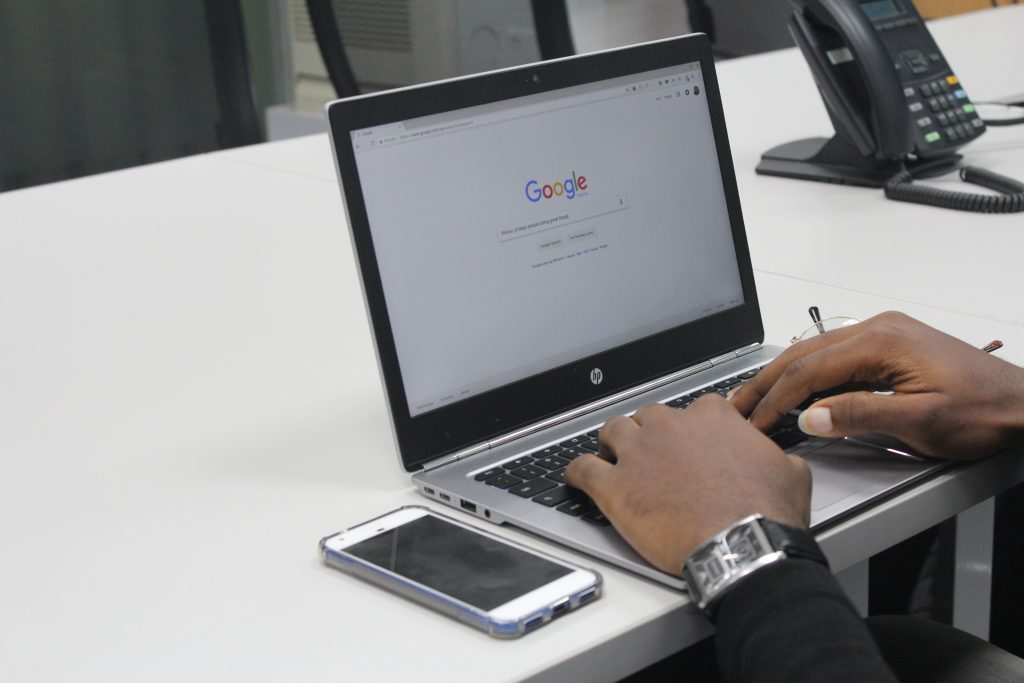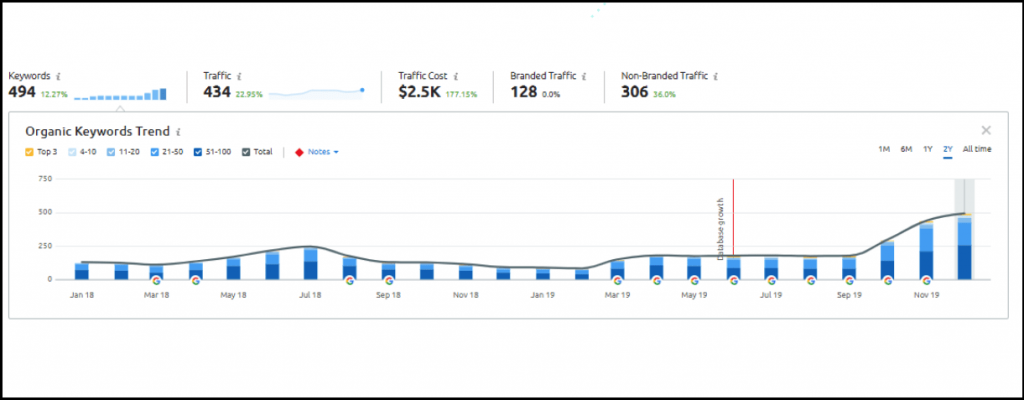SEM and SEO are inextricably linked, but the differences are crucial. Learning about each — and which you need — can accelerate your marketing success.
Here, you’ll find:
- How SEM and SEO are related (and how they relate to PPC)
- Similarities between SEO, SEM, and PPC
- The most important differences between these marketing types
- The best place to focus your marketing efforts
Search engine optimization (SEO) and search engine marketing (SEM) are two of the most common terms under that big ol’ “online marketing” umbrella.
With only a single letter of difference, how different can they be?
Turns out, quite a bit.
What is SEM?
SEM stands for search engine marketing. And as the name suggests, SEM aims to improve your performance and visibility on search engine results pages (SERPs) through various marketing strategies.
These strategies can include a combination of pay-per-click advertising (i.e. PPC) and organic strategies (SEO).
What is SEO?
SEO stands for search engine optimization. It broadly encompasses all “non-paid” strategies that help you appear higher on search engine results pages (i.e. not ads).
This can include content marketing, linking strategies, and technical improvements to your website — like increasing speed and simplifying navigation.
Obviously these strategies aren’t free. This just means we don’t pay the search engine to appear at the top of the results page — those are for paid ads (PPC) only. Ranking #1 (or as a snippet) is all about high-quality content on a high-quality website.
It can help to understand how Google’s algorithm works and tweak your website according to the 200+ search ranking factors to better comply with rules, optimize content, and be more appealing to searchers.
SEO strategies can be broken down into a few major categories. These are:
- On-page SEO: All of the content creation, optimization, and interlinking you do to create a website that people want to visit and that Google views as a valuable and worthwhile website to show in their rankings for various search queries
- Off-page SEO: The promotion, outreach, link building, and other efforts you take to promote your content on other sites, build a reputation, establish authority, and optimize factors like high-quality backlinks
- Technical SEO: All of the invisible or technical factors that go into making a site that complies with Google policies and guidelines, including metadata, Schema, and server optimizations like site speed and mobile compatibility
- Local SEO: The optimization you do to improve your rankings for location-based and locally-relevant searches (local SEO isn’t just for physical businesses, either, and almost half of all web searches are local)
Together, these elements are the bulk of what we consider SEO, which is a significant component of SEM.
The similarities between SEO and SEM
SEO is often part of an SEM strategy. Therefore, SEO is a subcategory of SEM, alongside PPC. And with so many acronyms, there’s bound to be confusion.
Some consider PPC and SEM to be synonymous. They believe SEM to be just the paid half of online marketing, while SEO is the organic half.
But we’re here to clear things up.
SEM vs. SEO vs. PPC
SEM is a Venn diagram: SEO is one circle, PPC is on the other, and SEM is where the two overlap.
Here are some notable differences between SEO and PPC:
The first difference is money. While you can do SEO for “free,” PPC is pay-to-play. PPC involves paying Google (or Bing, Yahoo, Amazon, or any other form of search engine) for a spot in the search results.
SEO, on the other hand, only requires paying for the people, agencies, and tools that assist in your efforts to rank higher — rather than giving money to Google directly.
How much do SEO and PPC cost? The answer is as much or as little as you want. SEO can be performed for free or cheap, though the results you get may not be effective.
And while you can run PPC ads cheaply, the results are just as small as the investment. Large brands have large budgets, befitting the number of digits on all the numbers they use.
The second difference is time. Time applies in two ways: how long it takes to start working and how long the impact lasts.
- SEO typically does not start working right away. SEO requires the search engine to index your content and rank it appropriately, which can take anywhere from a week to a year. It generally only takes a short time for Google search to index content and give it a rank, but it takes much longer for content to grow to a high enough rank to be visible in the top organic search results.
- PPC results, meanwhile, are nearly instant in comparison. You create an ad, the ad network (usually Google Ads) approves it, and it starts running immediately. As long as your budget and cost per click (CPC) are sufficient to win the ad auctions, your quality score and user experience are high enough to keep your ads in the running, and the traffic volume is sufficient, your ads will start to display immediately.
In terms of longevity, the same dichotomy holds:
- SEO can last nearly indefinitely. Some of the best content on the internet is many years old. While organic content can “age out” and fall out of favor, it can also be refurbished and kept relevant. With the proper maintenance, SEO basically lasts forever.
- PPC, meanwhile, lasts precisely as long as you have the money to pay for it and keep your ad campaigns active. If your budget runs out, the PPC campaigns stop until you put more money into the system. And, of course, if you decide you don’t like the ad’s performance, you can pause them at any time.
This phenomenon is primarily why both SEO and PPC advertising complement each other well. SEO starts slow and takes a long time to build up, while PPC begins almost immediately.
Further, you’re less likely to have PPC success without strong SEO. If your ad directs a prospect to a poorly written landing page, you’re probably going to miss out on a conversion.
High-quality web pages = conversion rate
The third difference is in keywords. Keyword research is at the core of both SEO and PPC. However, the types of keywords that work best and the metrics that you’re looking at will vary.
When performing keyword research, you’ll find specific keywords have different intents behind them. These intents are:
- Navigational: the user knows where they want to go and wants a link
- Informational: the user has a question and wants an answer
- Tutorial: the user has a problem to solve and wants to know how to solve it themselves
- Commercial: the user has a problem to solve and wants to research solutions they can buy
- Transactional: the user wants to make a purchase and is looking for where to do it
Informational and tutorial keywords tend to perform best for SEO and are less effective for PPC.
If your goal is to get your target audience to download a checklist, for example, PPC ads can probably get some downloads and provide value. However, you may want to let SEO handle these early-stage inquiries and focus on more purchase-ready keywords for your PPC campaigns.
Commercial and transactional keywords tend to perform best with PPC, though properly-formulated quality content can also work well for SEO. PPC tends to be most relevant when it has a tangible offer for the user and a concrete, easy-to-calculate return on investment.
A massive part of effective SEM is understanding the intent behind a search term and sculpting the marketing campaign you use to reach that intent most effectively.
The takeaway
“SEM” covers the bulk of your online advertising, while “SEO” is just one of the tools at your disposal, alongside PPC.
Your digital marketing strategy will depend on your goals, targeted keywords, budget, the quality of your site, your competition, and more.
Finding the right balance between SEO and PPC is essential in SEM. That’s why powerful tools like ConversionIQ exist. We created this platform to help you easily monitor and optimize your campaigns, resulting in better performance and higher ROI.
The question is, where do you put your budget? Can you write more content for organic traffic and SEO results, pay for high-quality tools to improve your overall marketing, or give Google money directly to give you more exposure and website traffic?
The choice is yours.



